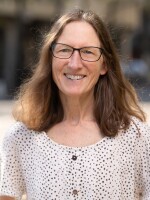This summer’s Lookout Fire east of Eugene burned more than two-thirds of a research forest near Blue River.
The H.J. Andrews Experimental Forest covers 25 square miles. It’s a mix of old growth, logged and replanted, and previously burned areas and has been used for research for 75 years. The forest is operated as a partnership between the U.S. Forest Service, the Willamette National Forest, and Oregon State University.
Matt Betts is an OSU professor and the Lead Principal Investigator for Long Term Ecological Research. He said some valuable old growth trees were lost.
“One of the sad parts for me is, we don’t have a lot of old growth forest left in Oregon and the Andrews had some of the best examples of that,” he said, adding that the old growth that burned is a loss to both the community and to Oregon in general.
Betts told KLCC the severity of the fire was mixed, which may lead to opportunities in the future.
“It’s really rare to have a place that’s been so extensively sampled light on fire," he said. "And so one of the most rigorous ways to go about science is to have what we call a pre- and post-design, where you’ve got data before some disturbance happens and then you collect data afterwards. And so we’ll have a ton of that.”
Betts said the biggest loss is the labor and equipment. He said there are thousands of plots and sensors on the land. Most of them will need to be re-established, and it’s not certain how they’re going to pay for it.
When lightning sparked the fire on Aug. 5, all 88 beds at the Research Center were full. Those scientists had to evacuate, and they and hundreds of students put their studies on pause while firefighters worked to bring the blaze under control.
Brooke Penaluna works with the U.S. Forest Service and is lead scientist at the Andrews. She said the next few months will be spent planning for researcher safety and re-entry.
"There is some thought by some of the fuels and fire people on the Willamette (National Forest) to expect to have some fire starts in the spring," Penaluna said. "Based on fires of this size, they expect something like seven starts potentially that we could see in the spring, so I think we’re looking at a time frame after that.”
Penaluna said the fire is most impactful to those who were doing short-term research. She said long-range studies can absorb the loss of one year of data.
“As an example," she noted, "we have a long-term fish and salamander data set: 37 years. So when you think about it, that’s 37 years from before the fire, we missed sampling this year … but we’ll be able to pick up with it post fire, so those longer term data sets have real depth to them and will provide insights into the fire.”




